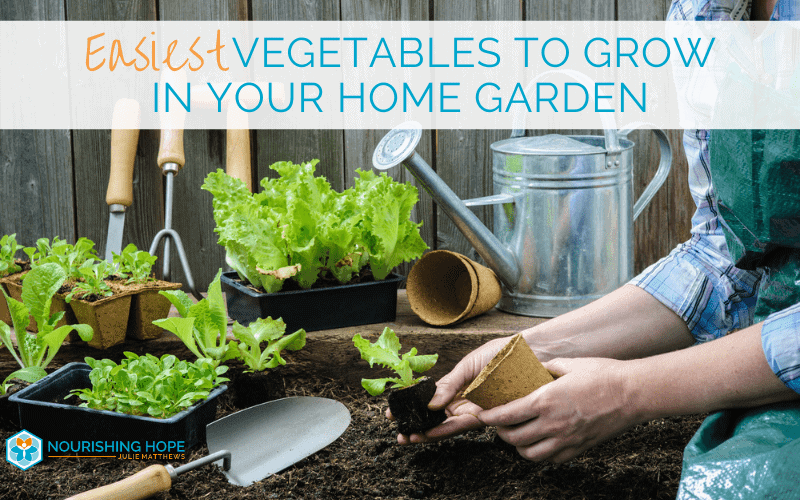
It’s vegetable garden time!
This is the perfect time to plan your garden. If you’ve seen my gardening posts in the past and you’ve considered a garden but hadn’t planned in time or had the capacity, now’s the time.
Typically, after Mother’s Day signifies the start of most summer gardens. Where I am in California and in other warmer spots, the season starts earlier. But most of you will be able to start your garden soon.
Some of you have written to me with your adventures in your own garden.
Others have said you don’t have a green thumb or you simply lack the experience… that you’d like to try growing something but you don’t know what to grow. And other people live in a big city or in an apartment and don’t have the space.
Today’s blog is about the Easiest Vegetables Anyone Can Grow.
I’ve lived in a big city, in an apartment, in a foggy place with not much sun, and I’ve also had the opportunity to grow vegetables at my family’s home both as a child and adult – so I’ve tried it all.
I’m not a farmer… I’m an average person that simply loves getting my hands dirty and watching things grow. I find it therapeutic to nurture plants. I find it nourishing to grow your own food, and I enjoy the feeling of self-reliance.
So, what I’m going to share comes from practical trial and error, and lots of mistakes.
And the good news is, if I can do it, you can too!!
The Easiest Vegetables to Grow
Zucchini
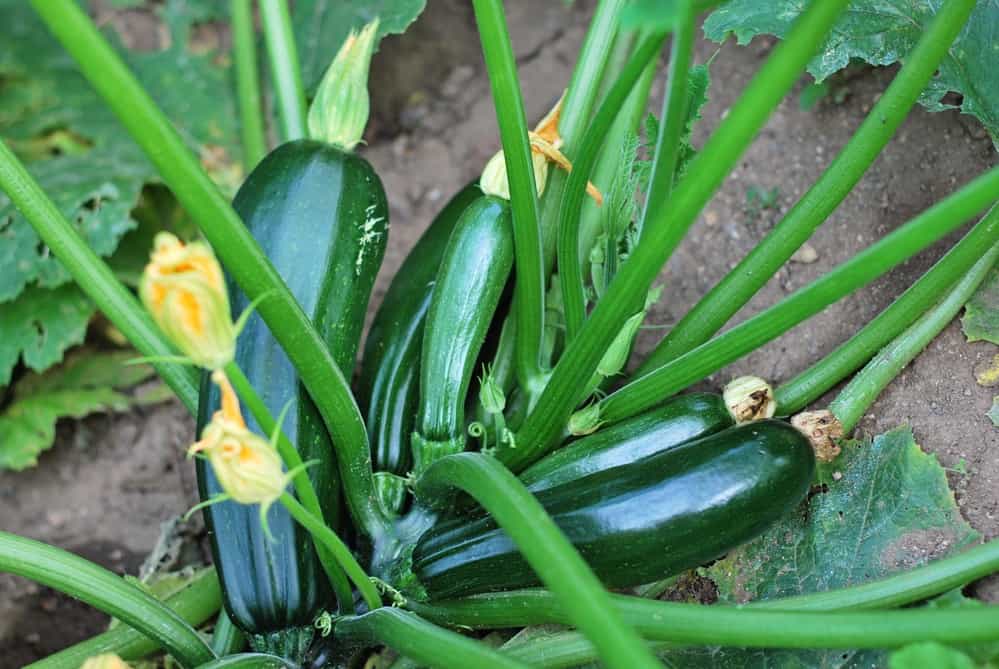 Zucchini is very prolific. You’ll get so many zucchini you won’t be able to keep up. Last year I had one zucchini plant and it supplied my family week after week. You can get vining varieties like Romanesco or bush varieties depending on how much room you have. Bush varieties require more room but they are easier and less maintenance because they don’t require staking. Vining varieties are great because you can grow upward when space is limited.
Zucchini is very prolific. You’ll get so many zucchini you won’t be able to keep up. Last year I had one zucchini plant and it supplied my family week after week. You can get vining varieties like Romanesco or bush varieties depending on how much room you have. Bush varieties require more room but they are easier and less maintenance because they don’t require staking. Vining varieties are great because you can grow upward when space is limited.
There are tons of summer squash varieties. Feel free to try any: zucchini, yellow summer squash, scalloped, patty pan squash in gold, white/light green, or green, or others. Feel free to try any of them.
Here are a couple of my favorite recipes with zucchini (but any summer squash can be substituted: Pickled Zucchini and Zucchini-izza.
Tomatoes
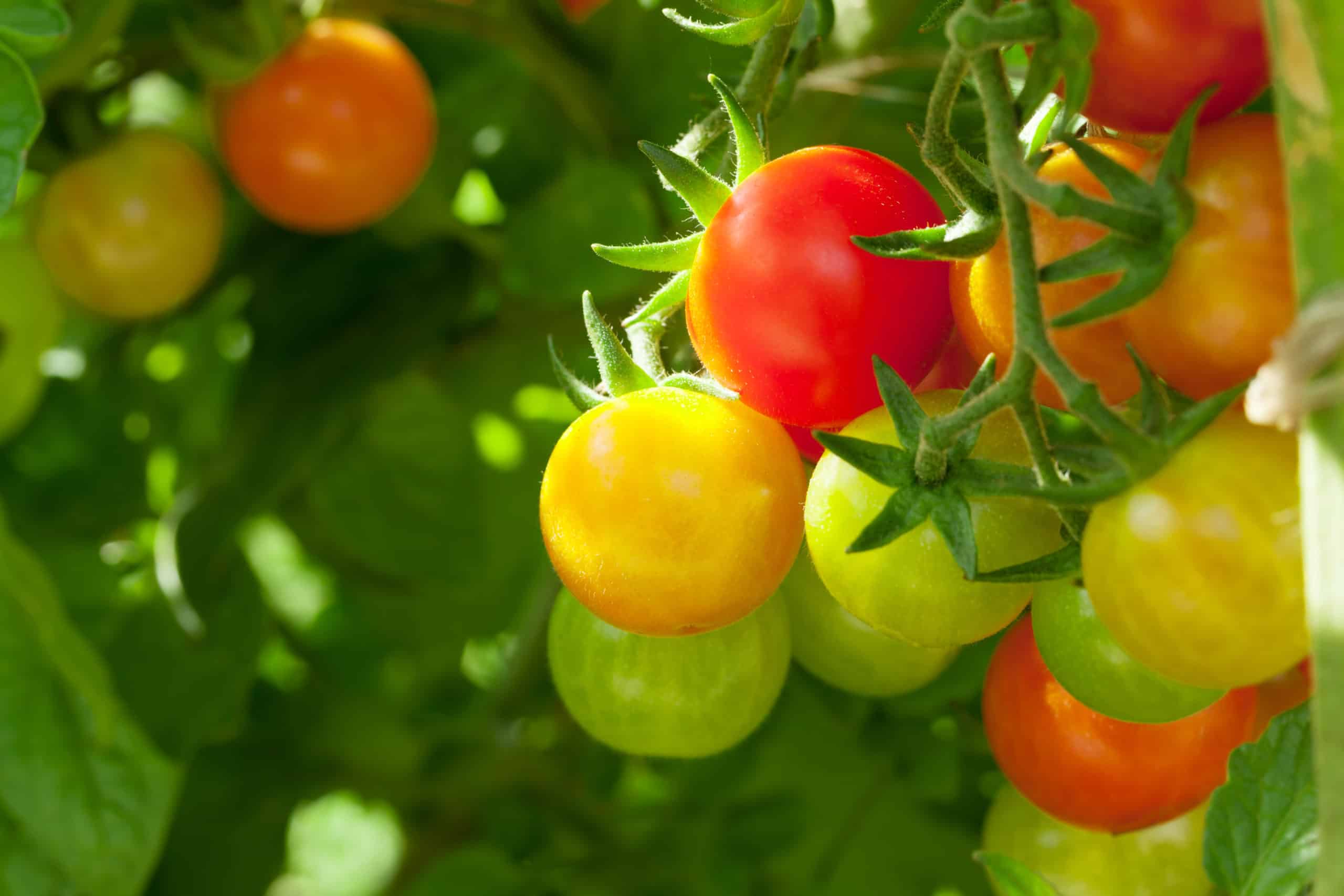 Tomatoes grow like a weed. They will grow all summer until the first frost hits.
Tomatoes grow like a weed. They will grow all summer until the first frost hits.
Cherry tomatoes are super easy and you get a ton of them – and kids usually love them straight off the vine. Sungold is one of my favorite varieties because they are so sweet (and orange in color).
Early Girl and other early varieties provide fruit earlier in the season, which is nice, especially if your growing season is shorter due to frost or snow. And it gets you off to an early harvest.
Slicing tomatoes are juicy and flavorful. They are great for slicing and eating, sandwiches, and salsa. Varieties include red round tomatoes and large tomatoes may cover a whole sandwich such as Mortgage Lifter, Beefsteak, and Stupice.
Heirloom tomatoes are probably my favorite. They are sweet and beautiful colors and delicious. They are often quite expensive in the store, so growing them at home makes you feel very abundant. However, their skins can be a bit thin and they can crack – once that happens they will start molding on the vine, so you want to watch them and pick them in time. My favorite is the German/Striped German variety. They are a marbled yellow and red tomato that is very sweet and beautiful to slice. There are many varieties: Cherokee Purple, Brandywine, German, and Valencia to name a few.
It’s always good to see if you want a determinate or indeterminate variety. Determinate are more bush-like and you don’t want to prune them because they grow to a “determined” size and pruning means you are cutting off potential fruit. Indeterminate grow like a vine and will continue to grow and grow taller and taller. Indeterminates are great where space is limited, and you want to grow them up a trellis or stake.
Either variety is wonderful, and if you are new to gardening and you have space, pick either variety, make sure you stake them and just let them grow. No need to do much really.
Green beans
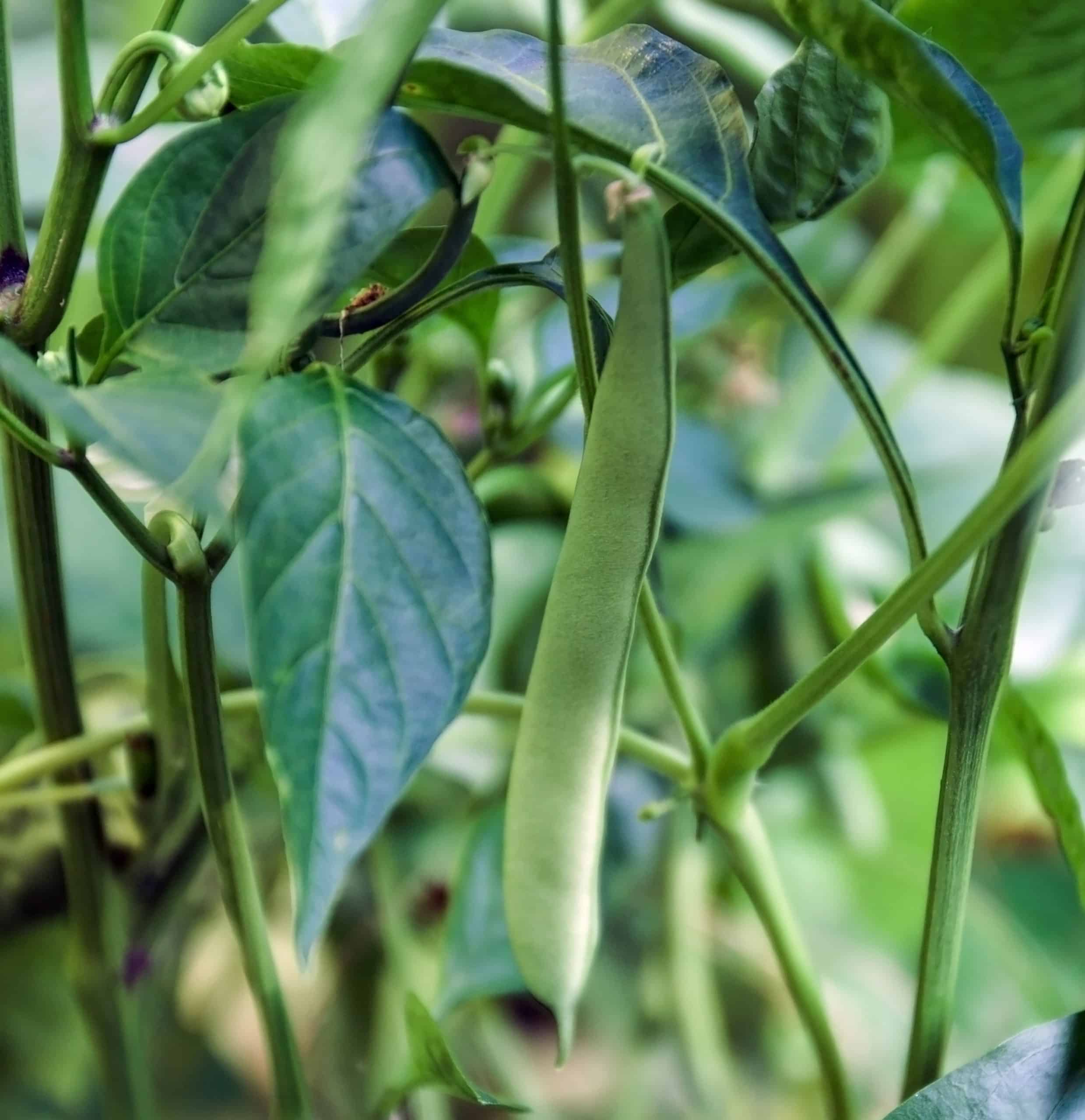 Green beans grow easily as well. They are one of our family’s favorite vegetables so this time I planted 36 plants – 24 from seed and 12 from seedlings. I also plan to plant some more seeds part way through the season… this is succession planting. This way you have some growing at different times so instead of a huge harvest all at once, you have a steady supply over time.
Green beans grow easily as well. They are one of our family’s favorite vegetables so this time I planted 36 plants – 24 from seed and 12 from seedlings. I also plan to plant some more seeds part way through the season… this is succession planting. This way you have some growing at different times so instead of a huge harvest all at once, you have a steady supply over time.
Green beans are easy and fun for kids to plant from seed. But if you want to get off to a quick start you can buy seedlings.
Green beans also grow as bush and pole varieties. Personally, I prefer the flavor of pole beans better, and if you want super tender thin green beans without the thicker skin, strings, and large beans inside, try French or Filet green beans and pick them early and often.
Pole beans are fun for kids to pick as they are easy to hunt for them on the vine.
Kale
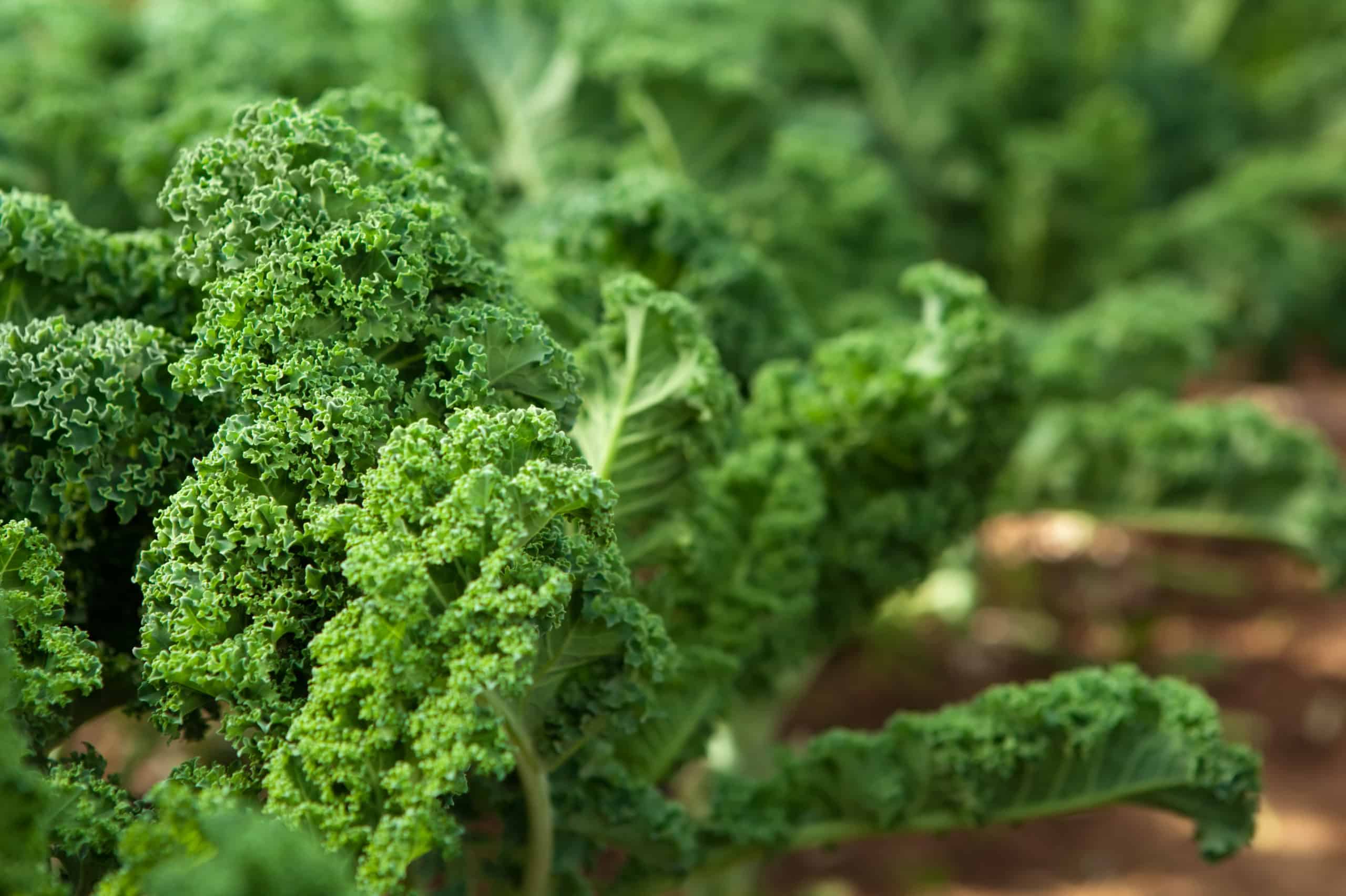 Kale is great for virtually any weather. They can grow in early spring and late fall (even winter in some places) as they are frost tolerant.
Kale is great for virtually any weather. They can grow in early spring and late fall (even winter in some places) as they are frost tolerant.
They are also fun to have growing in your garden because you can simply go outside and pick some when you want to make kale chips for dinner – a kids’ favorite.
There are so many varieties. Right now we have five varieties – Lacinato/Dino kale, Curly Green kale, Scarlet kale, Red Russian kale, and White Russian kale.
Lacinato are low oxalate and make great Kale Chips along with a Low Oxalate Kale Salad. And the Russian kale varieties are tender and chopped up great in salads. Although, I use all varieties for any kale needs.
Lettuce
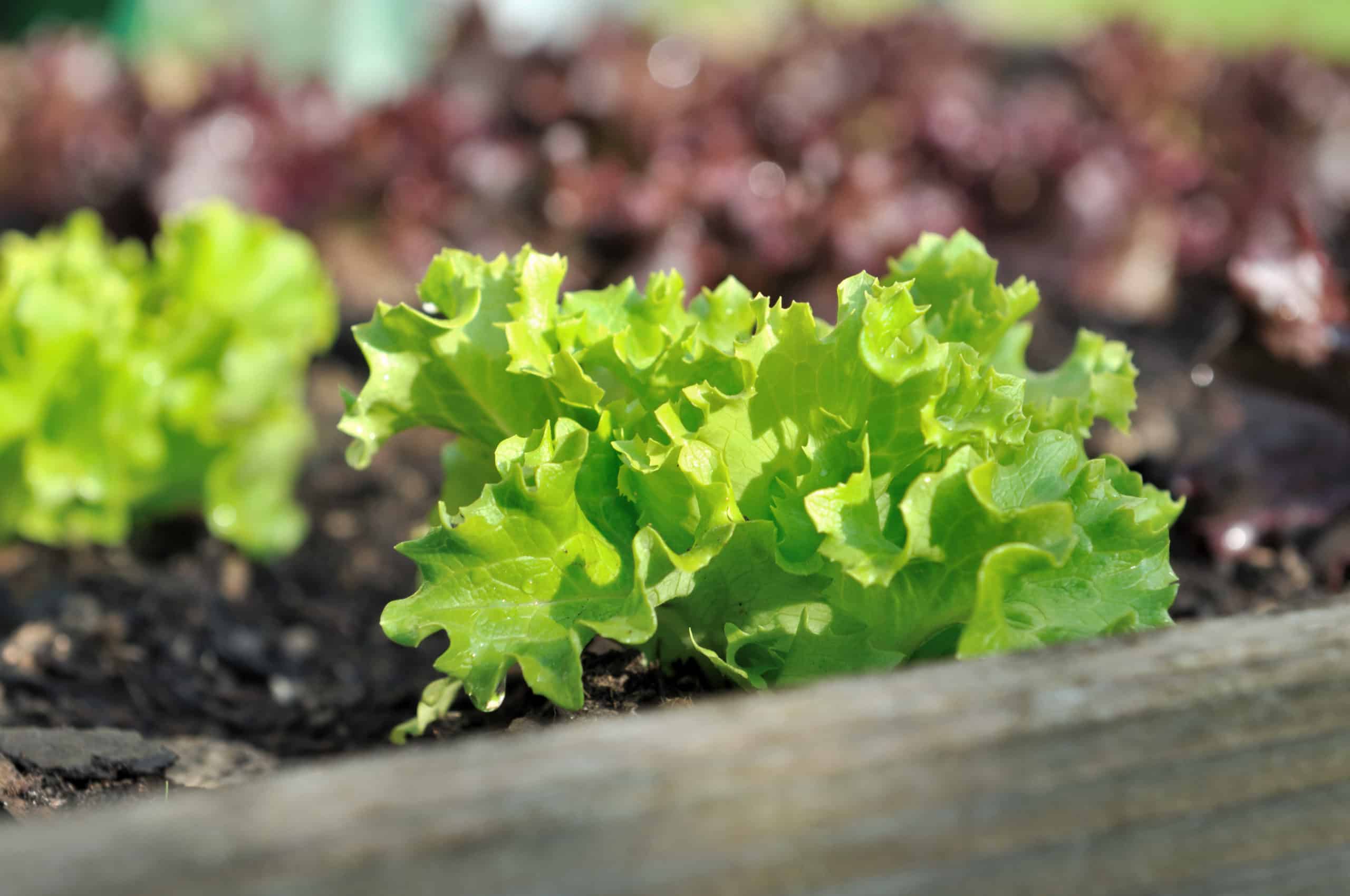 Lettuce grows great in partial shade so it grows well in an apartment or space where light is limited. In fact, in warmer climates it’s great to grow your lettuce in the shade of your tomatoes or in a partially shady spot. It does need 6 hours of sunlight but lettuce doesn’t like scorching heat.
Lettuce grows great in partial shade so it grows well in an apartment or space where light is limited. In fact, in warmer climates it’s great to grow your lettuce in the shade of your tomatoes or in a partially shady spot. It does need 6 hours of sunlight but lettuce doesn’t like scorching heat.
I find leaf lettuce or varieties like Butter Crunch are easier to grow than head lettuce. Or if you grow a lettuce like Iceberg or Romaine you just might find it doesn’t form a “head.” Often you might find that you just harvest leaf by leaf from the head as you go, rather than waiting for the whole head to form – as that can be more difficult for new gardeners.
You can also grow lettuce and kale as micro/baby greens, where you sprinkle lots of seeds close together and you harvest it when the leaves are small.
Parsley
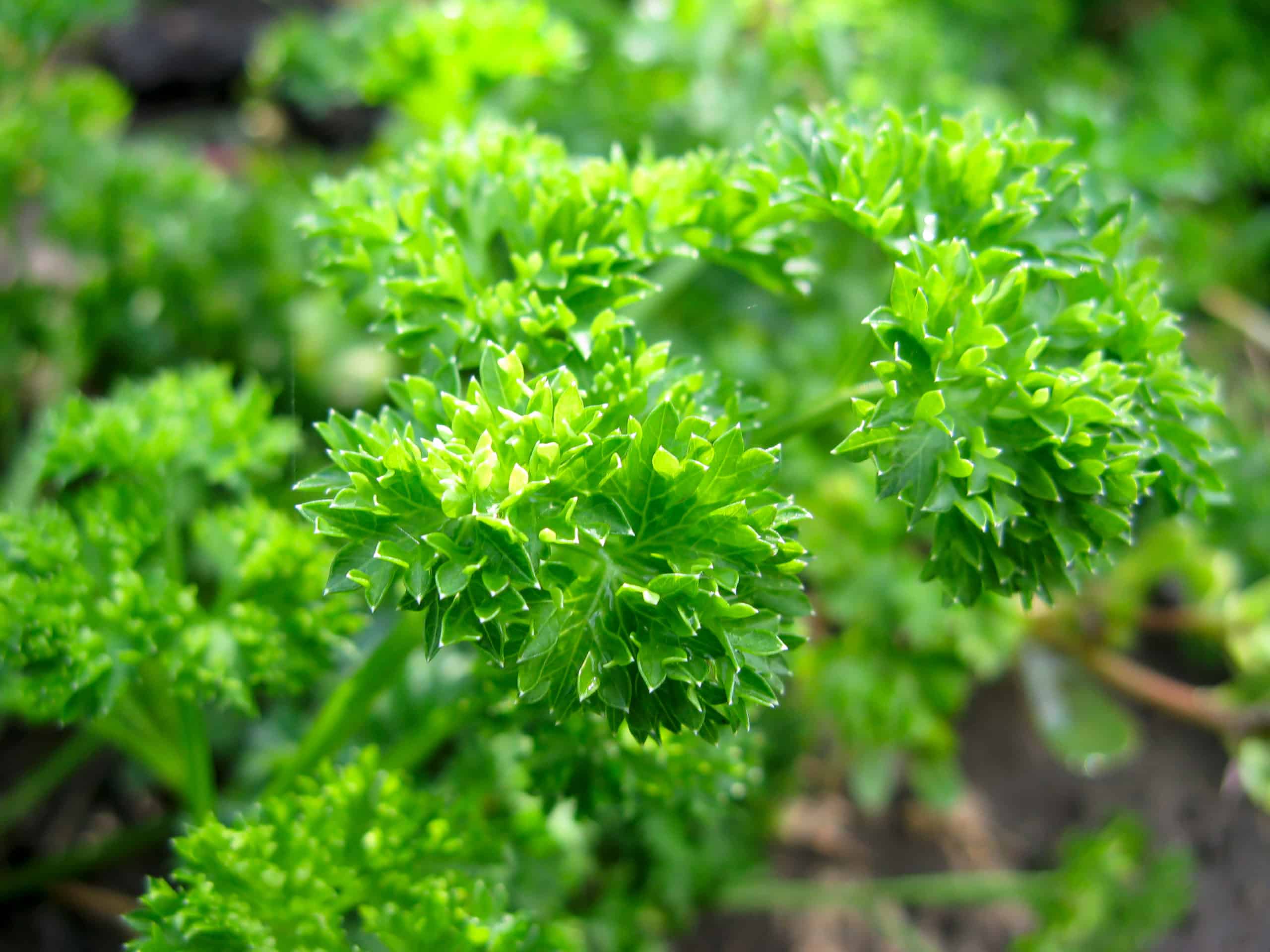 Parsley is easy to grow and very hardy.
Parsley is easy to grow and very hardy.
In fact, it will grow back for a second year, even after being covered in snow. But it is a two year annual, so it will go to seed after the second year and then be done with its lifespan.
There are curly and flat Italian varieties. Both are great with many nutrients, antioxidants, and health benefits.
You can chop up some leaves and sprinkle them on a fish dish for an added fresh flavor. They balance garlic well, and even freshen your breath. Kids often like to pick a stem and eat it just like that. I like to chop some and add it to a salad.
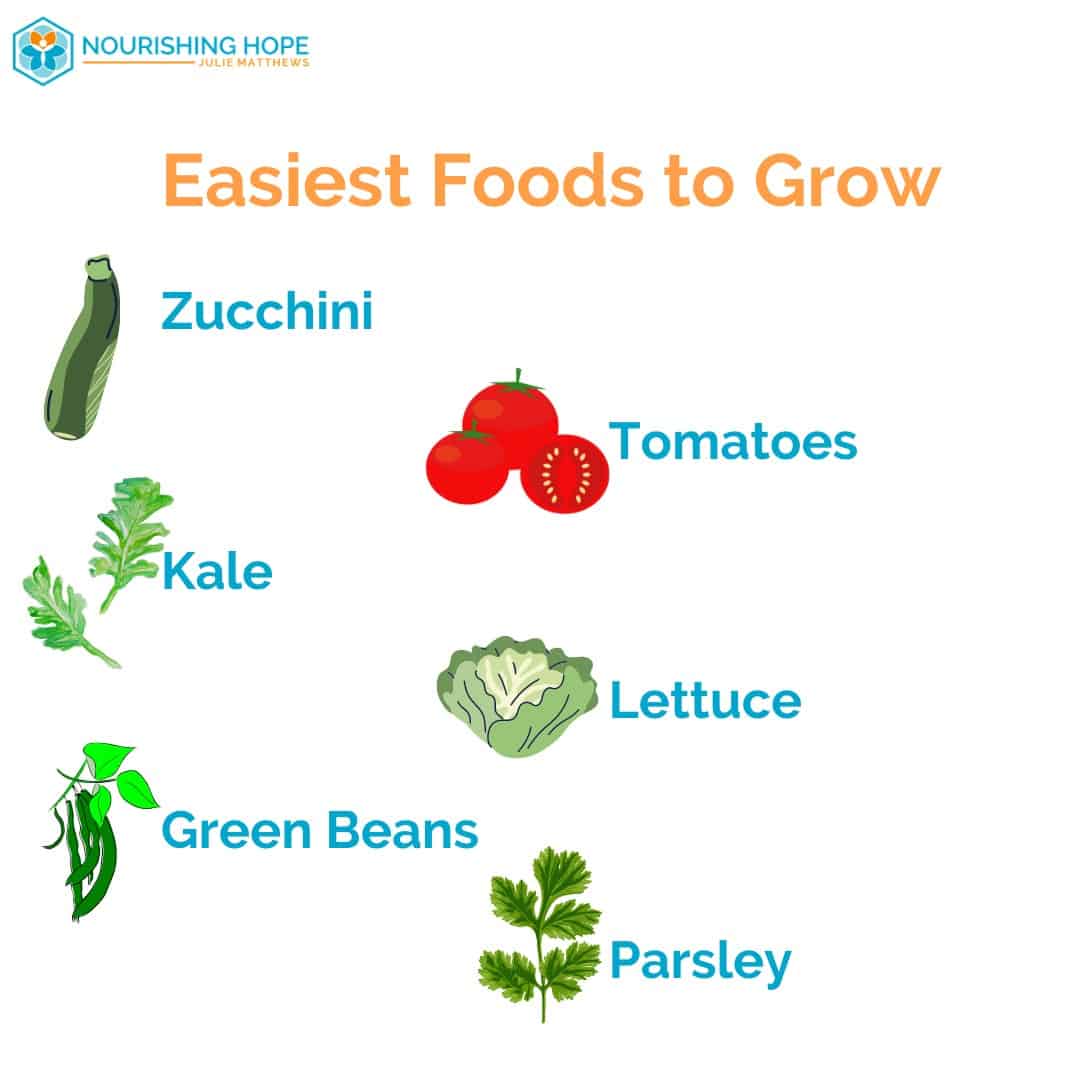
Growing in Containers
If you find you only have a patio to grow on (for example in our apartment in San Francisco, our south facing side is the front and the backyard is shaded by the building) so it’s better to grow in containers on the porch.
If you try planting straight into the ground, in most places the soil will need to be worked and amended. Sometimes it is too clay-like and the roots will not be able to grow down far enough.
Raised beds are the easiest way to start a new garden. You can buy varieties or build your own.
But if you don’t have the capacity to build a raised bed or tend to your ground soil, or you don’t have the space you need, growing in pots is just fine.
In fact, all of the vegetables I have just discussed: Zucchini, tomatoes, green beans, kale, lettuce grow really well in pots. Also peppers, winter squash, garlic, onions, potatoes, and carrots grow well in pots. Just make sure the container is large enough for the type of plant you are growing. Tomatoes need more room than lettuce, for example.
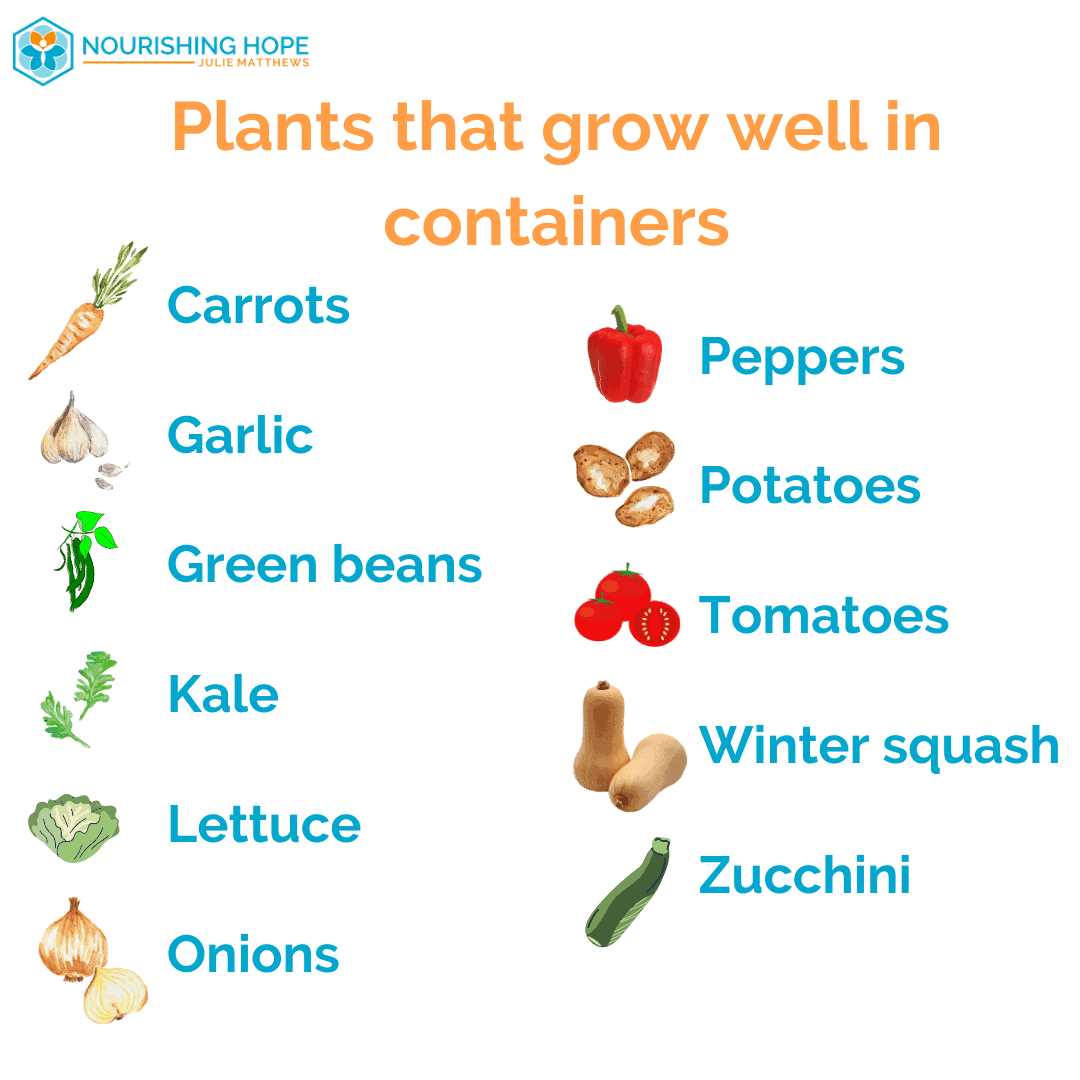
Best Containers
- Plastic pots
- Grow bags
- Potato bags
- Raised bed kit or this tiered version or this elevated raised bed kit
- Tower
Fertilize
Key. Be sure to water and fertilize!
Of course, watering is number one. But don’t forget to fertilize. If you want strong plants and sweet fruits, it’s important to remember to fertilize. I’ve made this mistake before.
With organic fertilizers you can often fertilize weekly or every other week. While I know that seems like a lot of time, so you can choose varieties that release over time like Dr. Earth.
Personally, I find it easier to do smaller amounts of fertilizer more frequently. Because when it’s only once a month, (time goes by so fast and) I forget. This way I just fertilize every weekend and if I miss a weekend or two, no problem.
Two of my favorite organic fertilizers:
Dr. Earth – I mix some in the soil when I plant my starts, and sprinkle some on the top layer of soil.
Neptune’s Harvest Fish & Seaweed Fertilizer – I like to use this as the season goes on since it can be “watered” right on top and sink down well since it’s a liquid fertilizer.
Have Fun Getting Started
Gardening is fun, easy, saves money on food, something your whole family can take part in, and a great stress relief (for me!), as well as nourishing for the mind and body.
While getting a vegetable garden started may seem daunting, it doesn’t have to be. You can start with the things I have mentioned that are among the easiest to grow. Start small so it is not overwhelming. But the most important thing is to start!
A seed pack or seedlings (already sprouted seeds/baby plants), some dirt, a few pots or area in your yard, sun, and water is all you need.
Have fun and please share with me what’s growing in your vegetable garden this year in the comments below!!
Amazon Disclaimer: Julie Matthews and Nourishing Hope is a participant in the Amazon Services LLC Associates Program, an affiliate advertising program designed to provide a means for sites to earn advertising fees by advertising and linking to Amazon.com.
FTC Disclaimer: Some links may be affiliate links. We may get paid if you buy something or take an action after clicking one of these.




Thank you for this helpful guide! As someone new to gardening, I really appreciate how simple and encouraging your tips are. I’m excited to try growing lettuce and radishes now — they seem perfect for beginners like me. Looking forward to more gardening inspiration from your blog!
Rebekah, Thanks. I love this idea! The only one I find tricky personally is basil. Thanks for sharing your feedback. This is a great idea for families. And they don’t take a lot of room. Great addition!
Hi Julie – Great article! Another category people can plant that’s pretty easy/forgiving is herbs, like basil, parsley, oregano, thyme, chives (these last three are a bonus because once you plant them, you don’t have to plant them again) – and herbs are great because if you forget to water them a time or two, it’s okay – they get better flavor. They all can be grown in containers in partial shade or full sun. Love your enthusiasm! Rebekah